A matter of art: Karyn Olivier uses objects to explore life, history
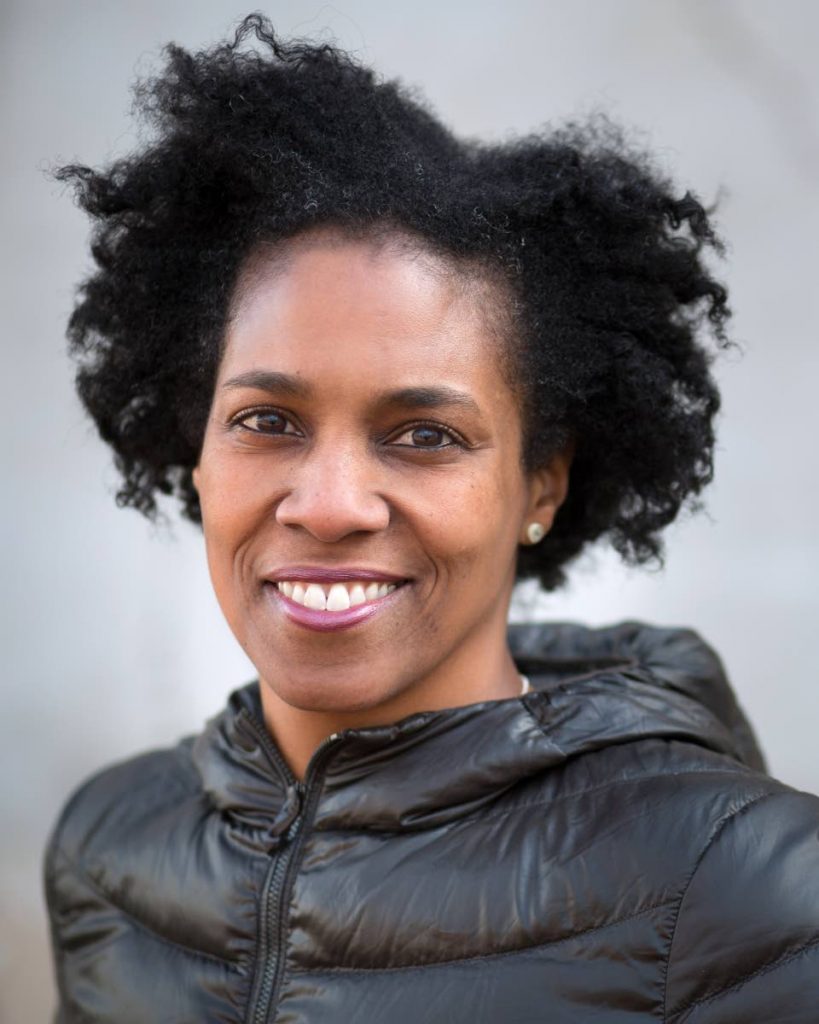
When people hear the word “artist” they usually think of the people who create paintings, sculpture, or something decorative that could fit neatly in a room to enhance a space.
However, that is not the kind of work 53-year-old artist and academic Karyn Olivier produces. Influenced by her Trinidadian heritage, Olivier often uses objects to expand the mind and highlight history as well as today’s stories.
“You don’t need anything. You don’t need to go to an art supply store. Art is made from matter. And I think that goes back to Trinidad. A piece of wire and fabric and you’re a bat.
“What does it mean to transform yourself, even if it’s only for a couple of days, even if you have to go back to that job you don’t like?
"There is a density of meaning. There’s so little you need to have your imagination and your mind and your body and you heart allow yourself to transform, to be anything.”
She makes work that people can feel and experience rather than just observe.
“My art is about taking what we know, what’s familiar and just doing this little tweak so all of a sudden you see it with a new lens. Or you’re looking straight ahead, but what if I take those blinkers off and all of a sudden you look to your right, that thing in your periphery?
"And I think that really comes from Trinidad.”
A professor of sculpture at the Tyler School of Art and Architecture at Temple University, Olivier creates public art, sculptures, installations and photography.
The Philadelphia-based artist has exhibited around the world, including the Gwangju and Busan Biennials in South Korea, the World Festival of Black Arts and Culture in Senegal, the Museum of Fine Arts in Houston, and the Mattress Factory and Sculpture Center in New York.
She received a 2020 Anonymous Was A Woman grant, has been the recipient of the John Simon Guggenheim Memorial Foundation Fellowship, a Pollock-Krasner Foundation grant, and a Creative Capital Foundation grant.
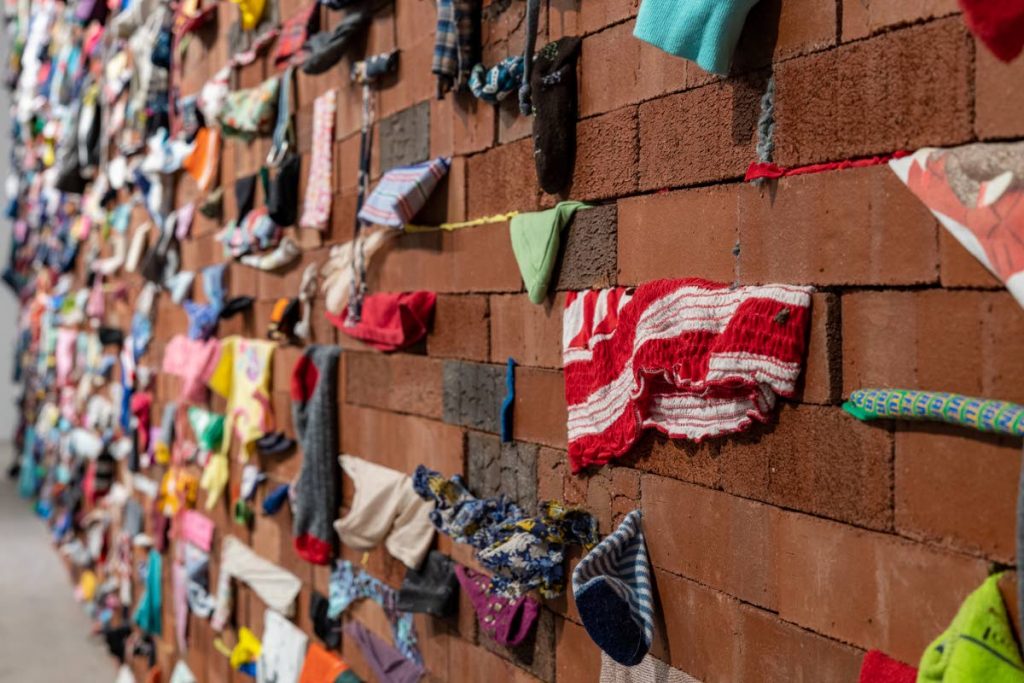
She was awarded the 2018-19 Rome Prize, the William H. Johnson Prize, and received an American Academy of Arts and Letters Award, the Joan Mitchell Foundation Award, the New York Foundation for the Arts Award, the Louis Comfort Tiffany Foundation Biennial Award, and a Pew Fellowship.
She does not usually show in commercial galleries because her pieces are usually very large. However, she recently had her first at the Tanya Bonakdar Gallery in New York from June 25-July 30.
The exhibition, At The Intersection of Two Faults, had nine pieces.
“Usually, I work at a site and I think about the history of the site. I see who’s living there and want to make a work that’s about that place and it’s history. So it was exciting because I was able to think about this white cube gallery.”
She told WMN the idea was initially sparked when she was thinking of the Pitch Lake in La Brea, which is one of her favourite places.
“I was thinking about Trinidad having the largest pitch lake and how at the intersection of two faults is where asphalt comes from, and about that word ‘fault’ in terms of our human faults and disappointments in ourselves. The idea of that fault where natural asphalt comes, but also a site of possibility.”
She took pieces of roofing asphalt someone had thrown away. She liked the concept of asphalt coming from the ground and used as roofing to shelter people. So she had photographs of objects embedded in or connected to the asphalt.
“Objects have a history. Objects have a meaning but they’re mutable. You use them as you need to.”
One of the pictures was of a pair of sneakers she wore to J’Ouvert for Carnival 2019.
“I had that photograph and put it on transparent paper and had it stuck in front of the tar. It was this weird thing. You look like you’re walking on the moon, but the glitter (on the shoes) makes you think of the constellations. But then the tar and the ground is dirty and you end up thinking about the grime that’s on you after Carnival. All of that!
"I ended up titling that piece 363 Days Soon Come. Now that Carnival’s over, we have 363 days until the next one.”
Another was a wall made of bricks with clothing as mortar.
One side of the wall showed a waterfall of fabric with different textures and colours, while on the other side, the cracks and spaces, the faults, of the supposedly solid wall were visible.
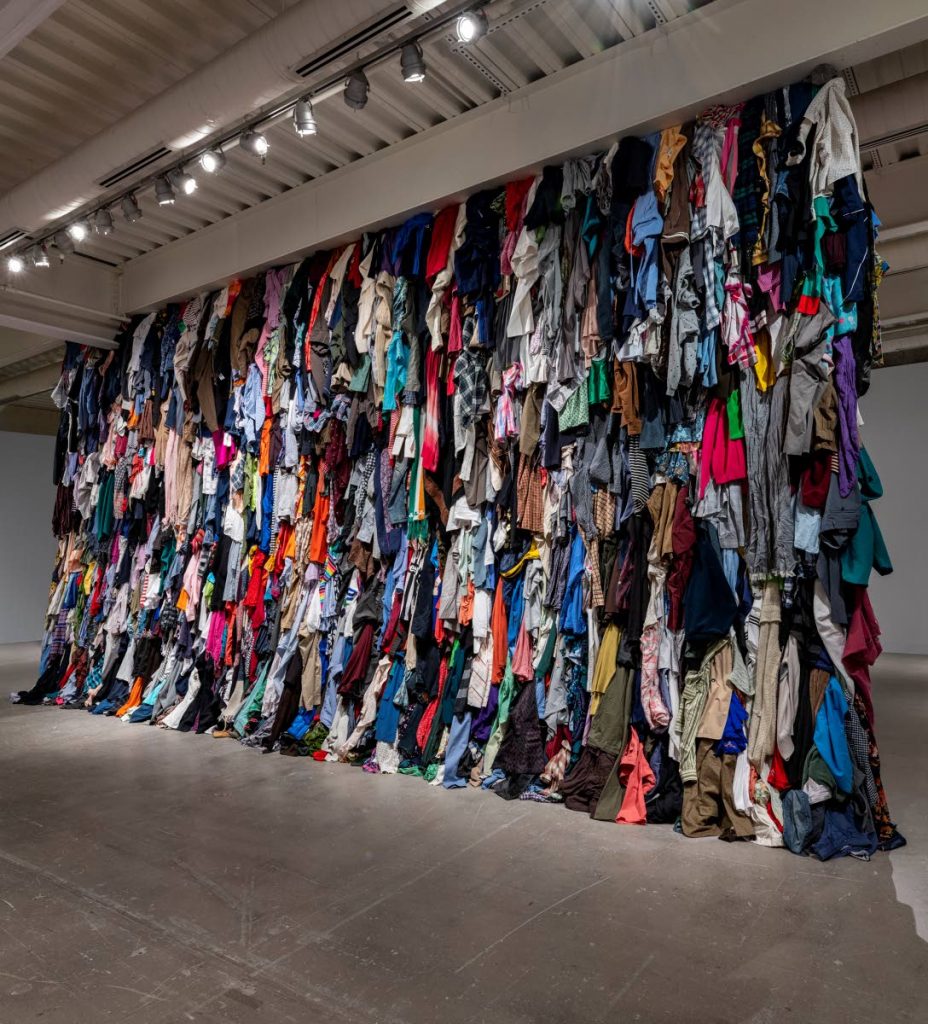
She explained when she first built the piece, she was thinking about former US president Donald Trump’s border wall with Mexico, the immigrant crisis, and how walls could both protect and block access.
But because the mortar was clothing, her wall could easily be taken down.
“There were a lot of colours and textures but you also get hit by, ‘Someone wore this. Did they make it?’ You can get caught up imagining other people’s lives. And then you go to the back and you can’t even handle the weight of the loss.”
Although not in the exhibition, another piece she enjoyed creating and seeing the effect it had on people, was The Battle is Joined, in Vernon Park, Germantown, which was made for Philadelphia’s Mural Arts program.
In 2017 she covered a 20-foot-high monument in acrylic mirror. The monument, the Battle of Germantown Memorial, was in memory of a skirmish between American and British troops during the Revolutionary War in the US.
She said in another part of the park there was a monument dedicated to an abolitionist Quaker from Germany, but no one paid any attention to it.
“Yes, there was a little bit of irreverence (in covering the monument), but it’s also wanting to point to the paradox of George Washington fighting for America’s freedom from British rule while owning slaves. And what does it mean that, right across the way, there is a monument to someone who really was fighting for black people? So it was me wanting to transcribe one history on top of the other.”
She explained that the monument is located in a black neighbourhood in a poorer part of the city, so for two months the mirrored surface reflected everyday black people. When they passed by, they were the monument. She hoped it made them think of their responsibilities and what it meant that they mattered in that space.
She added that monuments are static, heavy, depicting one moment in history, and often out of the way where few people would see them. But when it was mirrored it was never static, constantly shifting and reflecting the landscape, the people and what was happening at the time.
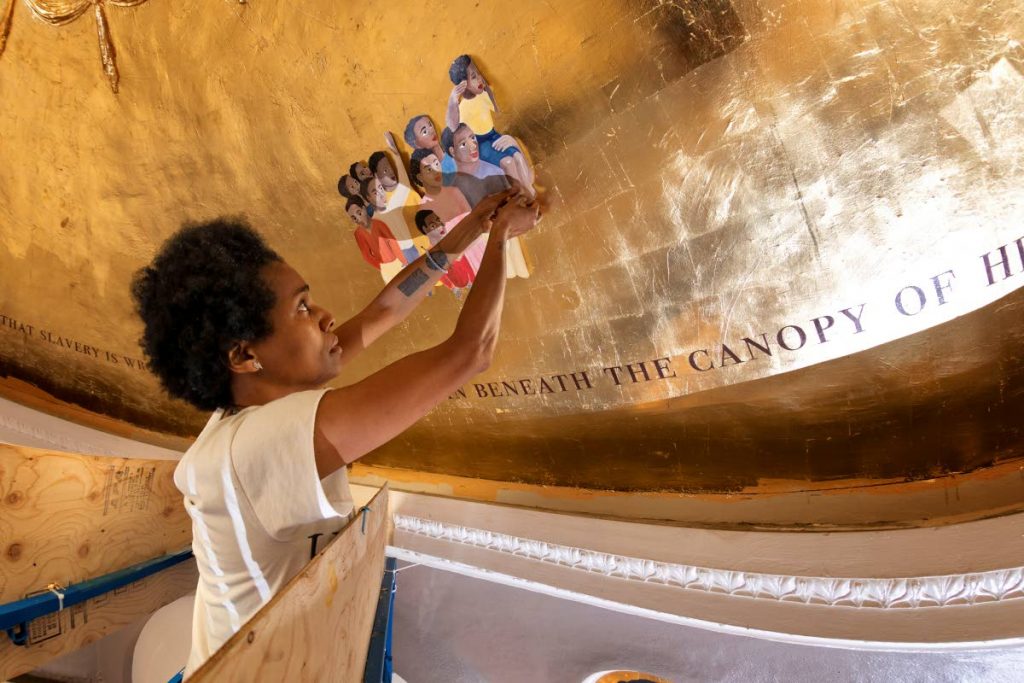
She said even though she has ideas, she never knows in advance what materials she would need for any project. In that way, her work is always new and exciting as she discovers new things, finds hidden histories, and interact with new people.
She said her work has beautiful moments but her hope is that it affects people’s hearts, makes them want to do more, and opens a space for discussions.
It's never too late
Olivier’s parents, Joan and Owen Olivier, left TT for Brooklyn when she was one year old to further their careers, as Owen was studying science and Joan wanted to attend business school. However, Olivier spent all her summer vacations in what her mother still thinks of as home.
She excelled at maths in high school, but did not do so well in her advanced maths classes at Dartmouth College in New Hampshire. She wanted to take an art class, but her mother suggested psychology since she was “good with people,” and so got her degree in 1989.
She worked at several large department and clothing stores as a buyer and later took a job with a clothing designer.
“She was this quirky woman who was finding a way to be an artist, but also making money. So I worked for her for about a year and I was almost 30 when I quit and started taking ceramics classes at the 92nd Street Y (Young Men's and Young Women's Hebrew Association).”
She decided on ceramics because she did not think she could draw, liked the idea of doing something tactile, and it seemed like something anyone could do.
“Clay is mud. It’s dirt. I loved the idea of dirt being everywhere. It’s the foundation of what we stand on. You add water to it and you could make a home with it, you can make pottery. I love that it’s a shape-shifting material. I loved the simplicity of it. You could make anything.”
After a year and a half of waitressing while taking classes, a teacher suggested she go to school for it. So she attended Cranbrook Academy of Art in Michigan for her masters in ceramics.
A lecturer told her she was thinking about the material and its limitations instead of the idea of what she wanted to create. So after her first semester she started making installations and never stopped.
“I wasn’t just thinking about the visual. I wanted the other senses to be engaged. I felt like I needed to be more literal. I wanted to engage the body.”
She applied for an academic residency in Houston, where she stayed for two years teaching ceramics and sculpture. She returned to New York, but got a job in Philadelphia at the Tyler School of Art and Architecture at Temple University. She commuted for seven years, but moved to Philadelphia just before she got tenure in 2013.
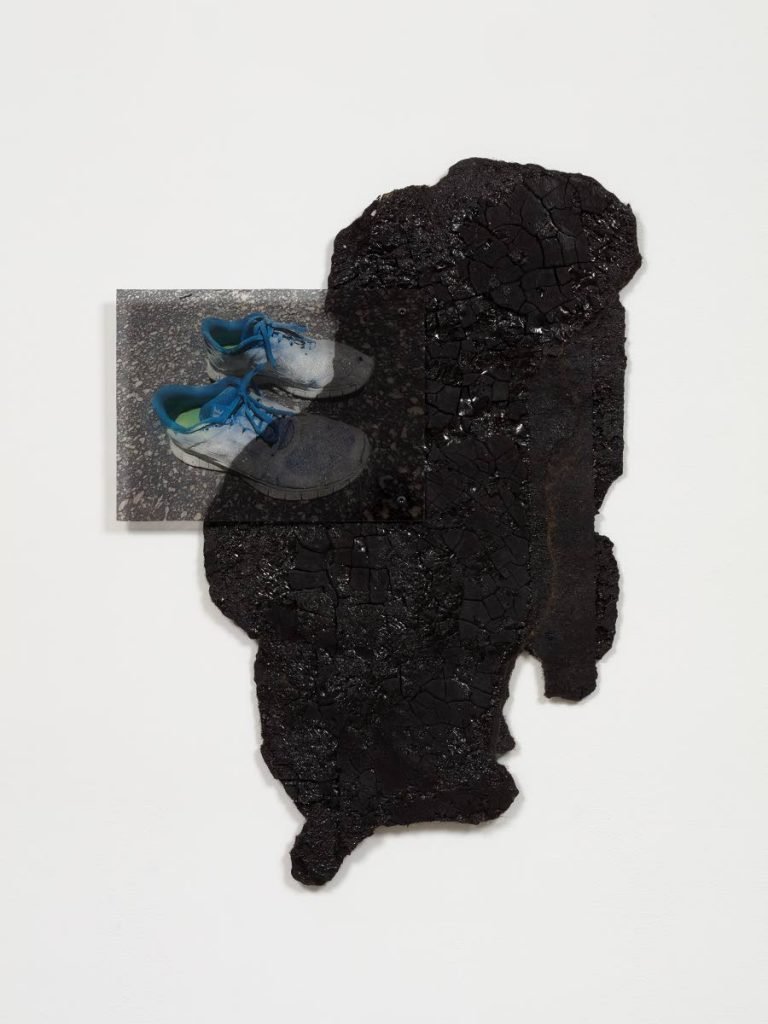
Olivier said her mother has always been supportive of her art, while her father tolerated her decision. Her brother is an actuary, her older sister is a plastic surgeon, and her twin sister is a lawyer. Both parents were worried about how she would make a living.
“Let me be clear that my parents did not leave Trinidad for me to study art.”
However, one year she had an exhibition and her deadline was fast approaching. Her parents were going to attend the opening, so she asked her father to help.
“He worked with me and I think it was the first time he saw it wasn’t play. It was hard work. It was planning, resourcefulness, it was using the left and right side of your brain. We were up until two in the morning working on site and then we were back at 7 am. I think from then there was a level of respect.”
That respect turned to pride when she became a professor, because, she believed, for him it indicated a level of security. Now her father is her biggest fan.
“It’s embarrassing sometimes,” she laughed.
She recalled she was offered full-time professorship at Yale University, but wanted to stay at Temple to ensure “black and brown kids” had a great teacher.
Some time later she won an award and her mother told her she was the bravest person she knew, not only for following her passion at a later age, but sticking with it through uncertainty.
She added that she would have liked her mother’s father, who has died, to see how well she has been doing. She feels he would have been thrilled with her career path and been very supportive.
Artists in TT
Olivier noticed every time her parents visited TT, they had to rediscover their home, because things change with time, as did they. It always makes her think about shifting identities and the way everything changes, which also influenced her work.
In 2008 she decided to discover Trinidad separately from her family. She took a semester off to do an international residency in TT, but it was cancelled. She decided to make her own residency and worked at Brian Mac Farlane’s mas camp. She immersed herself in Carnival, including learning how to walk on stilts, and made many new friends.
She said there is something about TT that allows artists to be free and expansive with their creativity. She said in TT “everyone is an artist” so people do not have to talk about it, and they do not care about artists in the same way as in other parts of the world. In this way an artist can feel supported even as people are not paying attention to their work.
She often wonders who she would have been if her parents had stayed in Trinidad.


Comments
"A matter of art: Karyn Olivier uses objects to explore life, history"